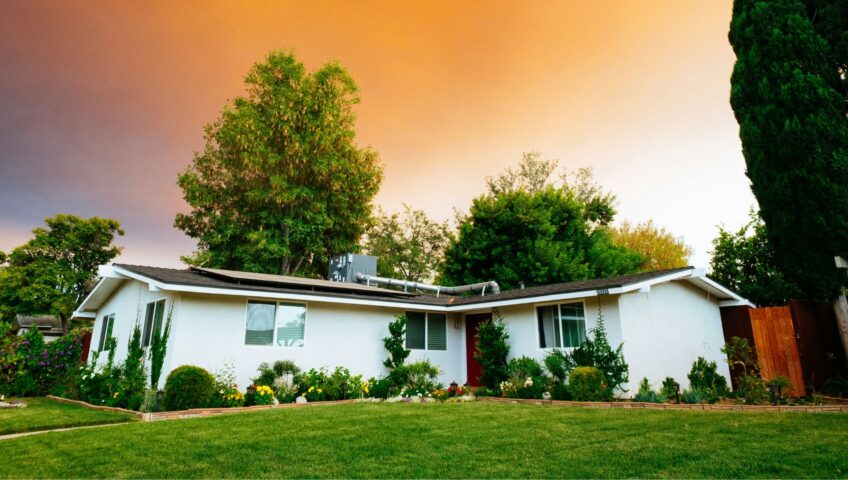Your landscaping can enhance your home’s curb appeal and create a relaxing outdoor space, but it takes time. Not everyone can get outside for the steady upkeep that might be needed for certain styles.
Thankfully, there are low-maintenance options that save time and effort while still providing a beautiful yard. Whether you live in Avon, Lakewood, or Westlake, Northeast Ohio homeowners can benefit from these easy-care plant choices and design styles.
Low-maintenance landscaping is about creating a sustainable garden that looks great without needing constant attention.
By choosing the right plants and design elements, you can enjoy a stunning yard with less work. This approach not only saves time and money but also supports environmental health by reducing water usage and chemical inputs.
Plant Choices for Low-Maintenance Landscaping
Drought-Tolerant Plants
We all know the jokes about the weather around here. Northeast Ohio’s forecast can swing between heavy rain and dry spells within a single day, making drought-tolerant plants an excellent choice.
Consider succulents like Sedum, which come in various colors and sizes, adding a unique texture to your garden. Lavender is another great option, offering fragrant purple blooms that attract pollinators and require minimal watering. What many don’t know is that Lavender also repels certain pests, making it a dual-purpose plant!
Native Plants
Native plants are adapted to local conditions, making them more resilient–just like the people who call Northeast Ohio home.
Black-Eyed Susan, Purple Coneflower, and Ohio Spiderwort are not only beautiful but also support local wildlife, including bees and butterflies. Native plants often have deep root systems that help improve soil structure and increase water infiltration, reducing erosion and runoff.
Perennials vs. Annuals
Perennials, which return year after year, reduce the need for replanting. Hardy perennials like Daylilies, Hostas, and Coral Bells are ideal for Northeast Ohio. These plants thrive with minimal care and offer continuous color and texture changes throughout the seasons. Unlike annuals, perennials can establish more extensive root systems, which helps them withstand drought and harsh weather better.
Ground Covers
Ground covers are a practical solution for reducing mowing and weeding. Creeping Thyme forms a dense mat with small, fragrant flowers, while Sedum doubles as a drought-tolerant option. Clover is an excellent ground cover that stays green during dry spells and enriches the soil with nitrogen, benefiting other plants. Interestingly, clover also attracts beneficial insects that help control pests.
Design Styles for Low-Maintenance Landscaping
Xeriscaping
Xeriscaping is a design approach that emphasizes water conservation, ideal for reducing water usage and maintenance. It involves using drought-tolerant plants, mulch, and gravel to retain moisture and suppress weeds. Incorporating decorative rocks and stones not only adds visual interest but also eliminates the need for extra upkeep. An added benefit of xeriscaping is the creation of a habitat for local wildlife, promoting biodiversity in your yard.
Rock Gardens
Rock gardens offer a rugged, natural beauty with minimal upkeep. Use a variety of rocks and stones to create different levels and textures, and plant hardy species like Sedum and Yucca among them. This type of garden requires little watering and weeding, making it an easy-care option. Plus, rock gardens can help with drainage issues, preventing water from pooling in unwanted areas.
Minimalist Design
Minimalist landscape design focuses on simplicity and clean lines, using fewer plants and more hardscaping elements like pavers, gravel paths, and raised beds. Opt for statement plants that require little care, such as ornamental grasses or evergreen shrubs. This modern, sophisticated style not only looks sleek but also reduces maintenance. Additionally, minimalist designs can create a serene, clutter-free outdoor space that promotes relaxation.
Practical Tips for Maintaining a Low-Maintenance Landscape
Mulching: Apply a thick layer of mulch around your plants to help retain moisture, reduce weeds, and improve soil health. Bark mulch, wood chips, or compost are all effective options. Mulching can also help regulate soil temperature, protecting plant roots from extreme weather.
Efficient Irrigation: Install drip irrigation or soaker hoses to deliver water directly to the roots, reducing water waste and the need for frequent watering. These systems can be set on timers to ensure your plants are watered consistently, even when you’re away.
Seasonal Maintenance: Perform simple seasonal tasks like pruning dead or damaged branches, fertilizing as needed, and keeping an eye out for pests. These small efforts can go a long way in maintaining a healthy, low-maintenance landscape. Regular inspections can help catch potential issues early, preventing more significant problems down the line.
Conclusion
Creating a low-maintenance landscape doesn’t mean sacrificing beauty or curb appeal. By choosing the right plants and design styles, you can enjoy a stunning, easy-care garden that saves you time and effort. Whether you’re starting from scratch or updating your existing yard, these low-maintenance landscaping options are perfect for homeowners in Northeast Ohio. Embrace these strategies to create a beautiful, sustainable outdoor space that enhances your home and lifestyle.

